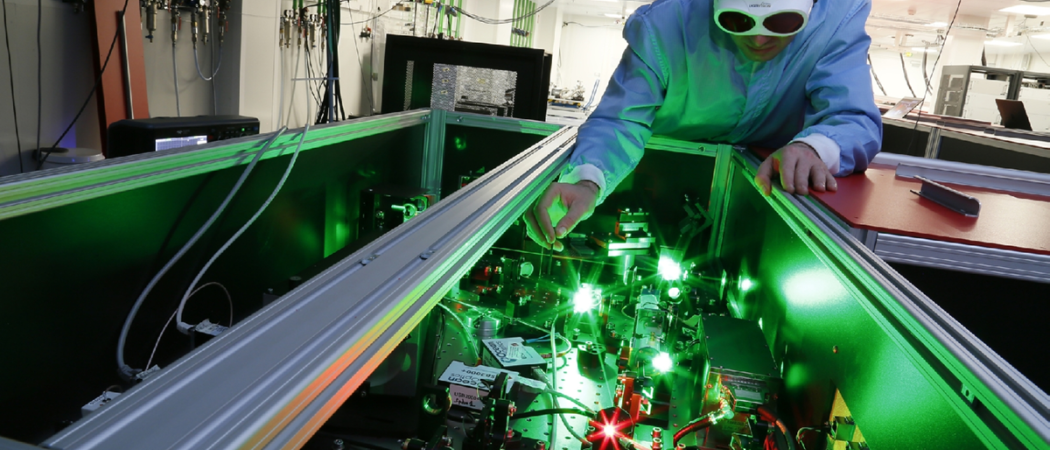Researchers continue test experiments at the largest research infrastructure in central and eastern Europe. EU commissioner for regional policy is ‘very concerned’ about ongoing litigation

Researcher tests laser at ELI-NP. Photo: Thales
Researchers at the Extreme Light Infrastructure - Nuclear Physics (ELI-NP) in Bucharest have successfully tested the facility’s powerful laser at 7 petawatts, as litigation continues with the supplier for its auxiliary equipment, a gamma beam.
Last week, EU commissioner for regional policy Corina Crețu took to Facebook to say she is “very concerned about the latest evolutions at the ELI project,” suggesting the legal battle “endangers the finalisation of the project.”
By the end of this year, when it reaches its full capacity of 10 petawatts, the laser facility will be ready to welcome researchers from across the world to work on projects in nuclear materials and radioactive waste management; industrial tomography and gamma radiography; pharmaceutical radioisotopes; medical imaging; radiation and proton cancer therapy.
However, the EU fears the legal row between ELI-NP and the EuroGammaS consortium, over delays in the construction and installation of the auxiliary gamma beam, could jeopardise the completion of the project under EU’s 2014-20 EU budgetary cycle.
In January, Crețu invited Romanian and Italian research ministers, representatives of ELI-NP and EurogammaS, and EU research commissioner Carlos Moedas to a meeting in Brussels, hoping that a bit of diplomacy would break the impasse.
Crețu called on the parties to suspend all litigation and to agree a timetable for completing the installation of the gamma beam. “We asked Romanian authorities to make all necessary efforts to solve the litigation,” said Crețu.
However, with the legal suit in full swing in a Bucharest court, it may be too little too late for diplomacy. The Romanian government was “open” to the idea of an amicable solution but it “cannot influence in any way the situation,” the ministry for research said in a statement. The legal row can be settled “only through a court decision,” the ministry said.
In response, Crețu said the Romanian government should have reacted more swiftly and she warned if all equipment is not completed under EU’s 2014-20 budget, the project is facing “significant financial loss” and will “undermine” efforts by the EU to promote collaborations between research infrastructures and business.
As things stand, ELI-NP will not back down and hopes to find a new supplier for its gamma beam before the end of the 2023, when the current budgetary cycle ends. “At the moment, there is European and international expertise to deliver such a system,” ELI-NP said in a statement.
The EuroGammaS consortium is led by the Italian Institute of Nuclear Physics, and includes the Sapienza University of Rome, the French National Centre for Scientific Research and a number of companies in Italy, France and Sweden.
Together with sister facilities in Hungary and the Czech Republic, ELI-NP is one of the first large research infrastructures in central and eastern Europe, and the first time an EU member state has set up a large research infrastructure using structural funds.





 A unique international forum for public research organisations and companies to connect their external engagement with strategic interests around their R&D system.
A unique international forum for public research organisations and companies to connect their external engagement with strategic interests around their R&D system.